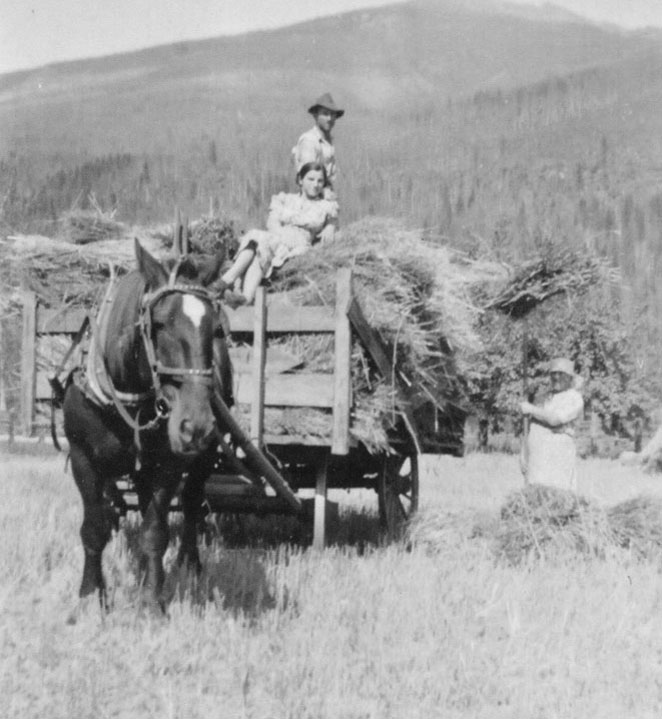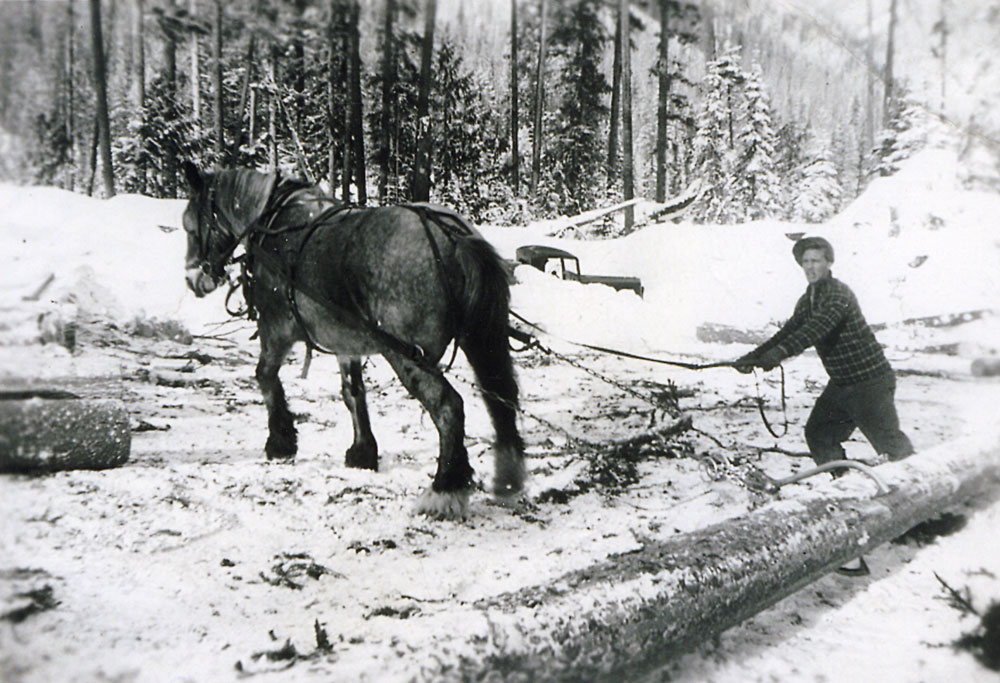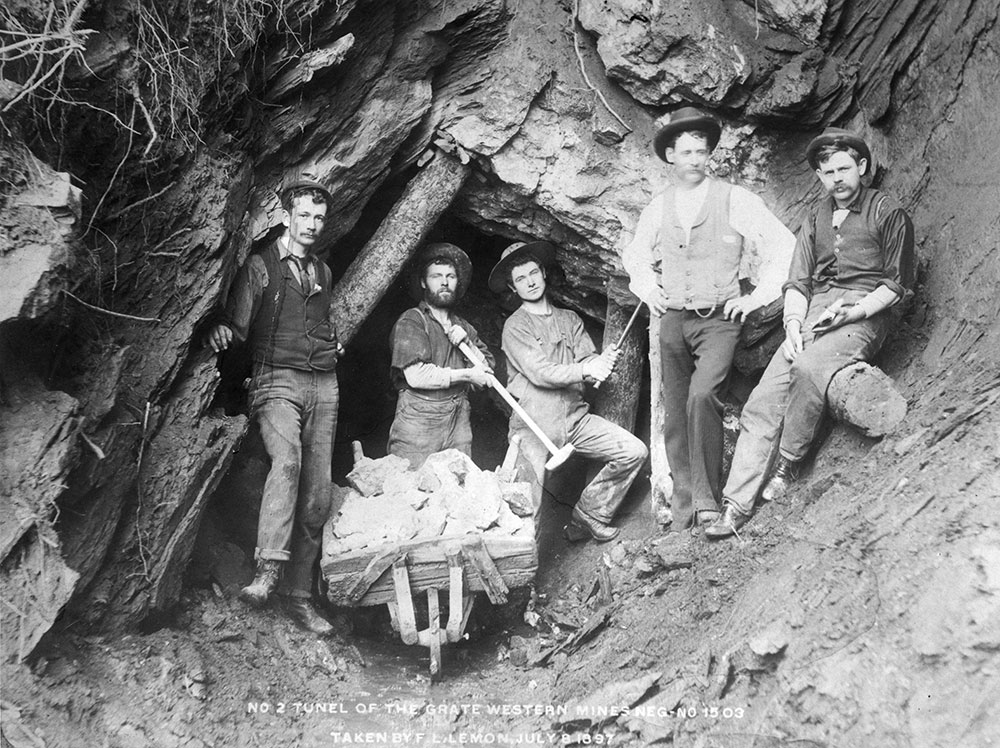Coming to the Valley
Why did settlers come to the Columbia Valley?
What drew them here?
The Canadian Pacific Railway was completed in 1885, joining British Columbia to the rest of Canada. Settlers came to Revelstoke, which was an important interior community due to its prominence as a railway centre. Others settled south of Revelstoke, carving farms out of the forested wilderness.
The abundance of timber gave plenty of opportunity for mill owners and for millworkers and loggers. Mills at Revelstoke, Arrowhead, and Comaplix, on the northeast arm of the Upper Arrow Lake processed the river valley’s old growth logs, transported by horse, and on the river.
Mineral finds all throughout the valley lured miners and prospectors. The community of Thomson’s Landing, later known as Beaton, was a gateway to the rich mining fields of the Lardeau region further west, to silver, lead, and other ores.
Mining and settlement pushed the Sinixt people further out as they lost access to their ancestral lands and rights. They faced resistance, hostility, and in one case, murder. In 1894, a Sinixt man named Jim was shot by Samuel Hill, a settler at Galena Bay, when Jim asked Hill not to cut down trees until Jim had checked his trap lines. The altercation ended in Jim’s death. Samuel Hill was acquitted of murder at the trial.
Prior to the construction of the Hugh Keenleyside Dam, the Columbia River and the Arrow Lakes were alive with human activity – farming, mining, logging, and recreation.
Cathy English Interview – Coming to the Valley (captions available in both French and English). Enjoy this video with an English transcript.




